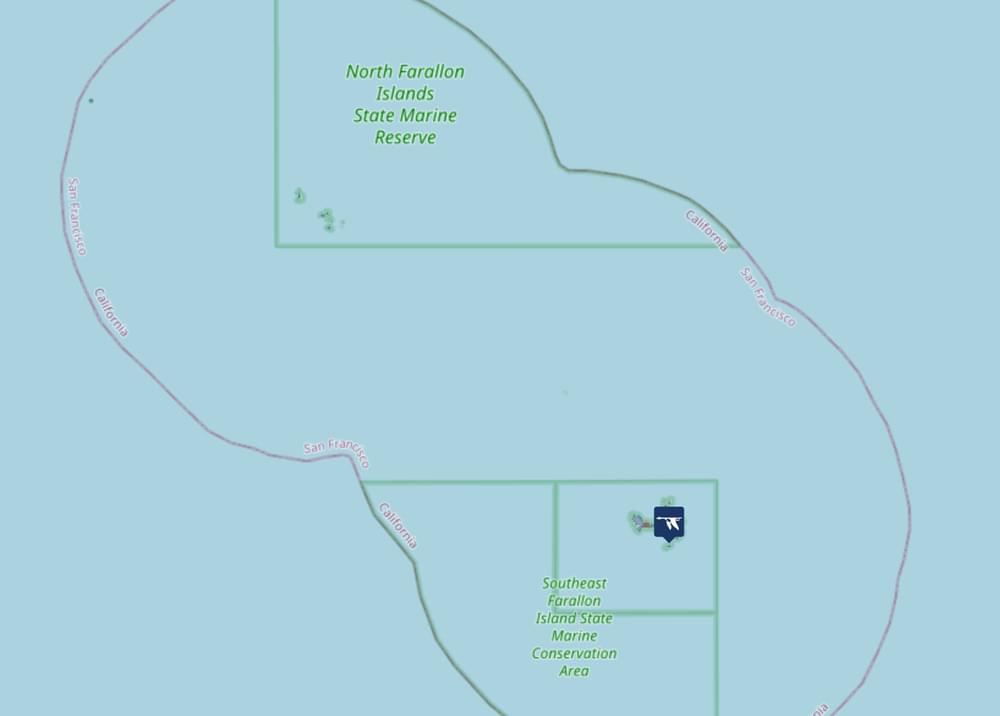
San Francisco, California, US
Southeast Farallon Island (Farallon Islands NWR, restricted access)
437 species

San Francisco, California, US
437 species


San Francisco, California, US
83 species


The Farallon Islands National Wildlife Refuge is located on the pacific coast approximately 28 miles west of San Francisco California. Totaling 211 acres, it is composed of several islands in four groups: the North Farallon, Middle Farallon, South Farallon Islands, and Noonday Rock. The North Farallon, Middle Farallon, and Noonday Rock were designated as the Farallon Refuge by President Theodore Roosevelt in 1909 to protect seabirds and marine mammals. South Farallon Islands is the largest island at 70 acres and was added to the refuge in 1969. These rocky islands contain the largest seabird nesting colony south of Alaska; they hold the largest colony of western gulls in the world, and they support half the world's population of Ashy Storm-Petrels. Southeast Farallon is the only island that supports structures from earlier times, several of which have been maintained or renovated for refuge management purposes.
Biologists from Point Blue Conservation Science first visited the islands in 1967 and have maintained a permanent presence since 1968. In 1971, PRBO and the U.S. Fish and Wildlife Service began joint protection, monitoring, research, and management of the Refuge through a cooperative agreement.
Congress designated all these islands, except Southeast Farallon Island, as the Farallon Wilderness Area in 1974 (Public Law 93-550). The Farallons are also designated as a State Ecological Reserve and a Golden Gate Biosphere Reserve.
In 1981, Congress designated the Gulf of the Farallones National Marine Sanctuary, which spanned 1,279 square miles of water surrounding the islands. This sanctuary protects open ocean, nearshore tidal flats, rocky intertidal areas, estuarine wetlands, subtidal reefs, and coastal beaches within its boundaries. Today, the Greater Farallones National Marine Sanctuary encompasses 3,295 square miles of federally-protected open ocean and coastal waters off the north-central California coast, and is one of the most productive and biodiverse marine ecosystems on the planet! It is home to one of the largest feeding grounds for white sharks, 29 species of whales and dolphins, over 390 species of fish, and over 330 species of invertebrates, deep sea corals, sponges, shrimp, crab, and other mollusks and crustaceans and much more.
Content from Official Website
